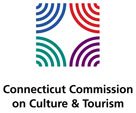By Mary M. Donohue and Whitney Bayers
(c) Connecticut Explored Inc. Summer 2011
Subscribe/Buy the Issue!
Black churches have long been at the forefront in the battle for social progress and equality. Since the end of the 18th century, African Americans worked to organize Christian congregations that would afford them full membership, often splitting away from white congregations. In addition to serving the spiritual needs of their members, African American churches served as social and political platforms, boldly condemning slavery, organizing abolitionist societies, serving as stations on the Underground Railroad, starting schools for Black children, and hosting nationally known speakers such as Frederick Douglass and William Lloyd Garrison. As African American churches emerged in urban areas, they became social centers for the surrounding neighborhoods—safe places to worship, discuss issues and hold meetings. Issues of great importance to these congregations throughout the 19th and 20th centuries included suffrage, lynching, the Ku Klux Klan, access to fair housing and education.
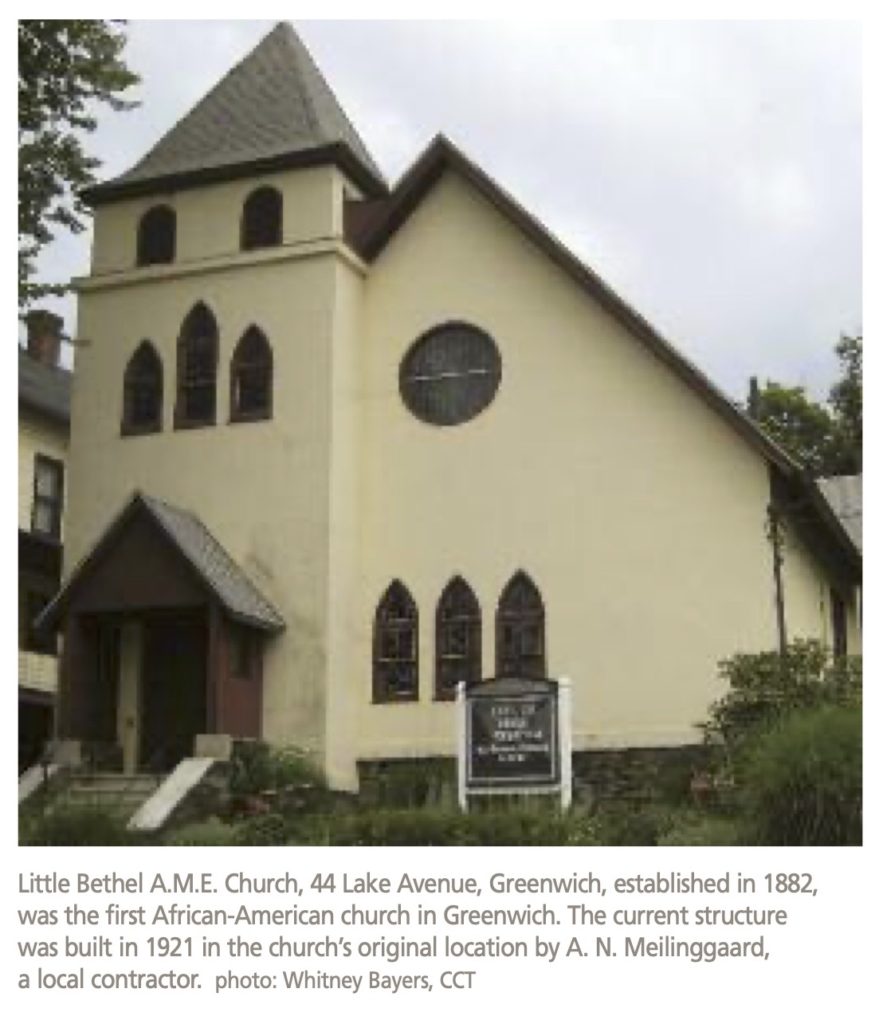
Little Bethel A.M.E. Church, 44 Lake Avenue, Greenwich, established in 1882, was the first African-American church in Greenwich. The current structure was built in 1921 in the church’s original location by A. N. Meilinggaard, a local contractor. photo: Whitney Bayers, CCT
Two of Connecticut’s earliest Black churches were Talcott Street (now Faith) Congregational Church in Hartford and Dixwell Avenue Congregational Church in New Haven. In a long and complex history, Faith Congregational Church traces its roots back to 1819, when Hartford’s African Americans rejected seating in the galleries of white churches and began to worship in a meeting room of the First Church of Christ. [See “Faith Congregational Church: 185 Years—Same People, Same Purpose,” Summer 2005.] Dixwell Avenue Congregational Church was founded in 1820 as the African Ecclesiastical Society by Simeon Jocelyn, a white abolitionist, and 24 former slaves.
A.M.E. and A.M.E.Z. Churches
Among Black congregations in Connecticut, two particular denominations stand out. In a time when the Underground Railroad was heavily traveled, congregations of the African Methodist Episcopal (A.M.E.) and African Methodist Episcopal Zion (A.M.E.Z.) churches had conductors standing by to send freedom-seeking passengers on toward liberty.
The A.M.E. denomination stemmed from St. George’s Methodist Church in Philadelphia. Amidst rising tension between Black and white members and the segregation of Black worshippers into an upper balcony, member and former slave Richard Allen and others gathered fellow congregants and left St. George’s to form a new church in 1794. In 1816, the African Methodist Episcopal church officially departed from the Methodist church and became the first independent Black denomination in the nation.
In a separate movement in 1796 in New York City, African-American parishioners left the congregation of the John Street Methodist Church and organized a separate African chapel, which they named Zion. Black Methodists were rarely allowed to preach and were restricted from becoming members of the Methodist Conference. After two decades of continued affiliation with the Methodist Church, the group voted to make a separation to become the African Methodist Episcopal Church. In 1848, Zion was added to the name in order to distinguish their denomination from the Philadelphia group and to honor their mother church.
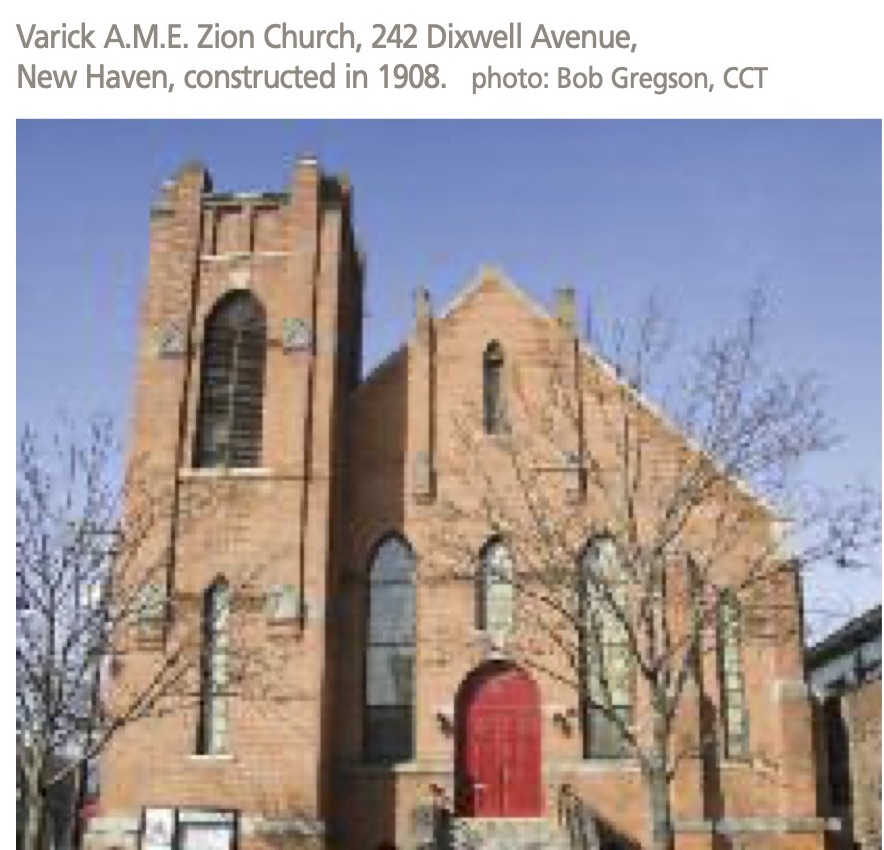
Varick A.M.E. Zion Church, 242 Dixwell Avenue, New Haven, constructed in 1908. photo: Bob Gregson, CCT
The earliest of this denomination in Connecticut is the Varick Memorial A.M.E. Zion church in New Haven. Named for James Varick, the first Black ordained bishop of the A.M.E. Zion church, Varick Memorial Church was organized in 1818 when more than 30 African Americans left the Methodist Church to form their own congregation. In 1820, it officially became affiliated with the A.M.E. Zion church movement of James Varick. By 1841, the church had a building on Broad Street, but it relocated in 1872 to Foote Street. In 1908, the present building was constructed, and it was here that Booker T. Washington made his last public speech before his death in 1915.
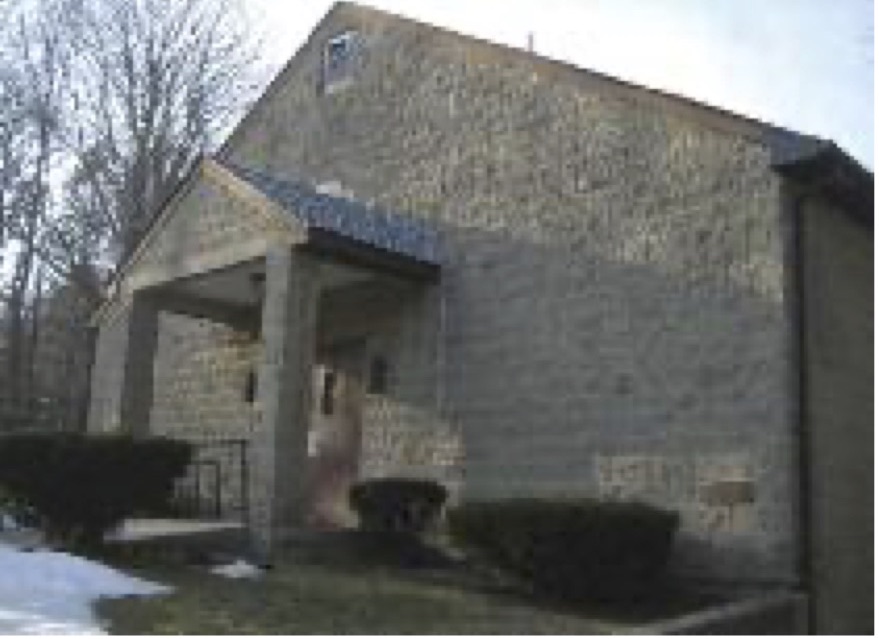
Cross Street A.M.E. Zion Church, 160 Cross Street, Middletown, became known as the Freedom Church for its abolitionist activity in the 19th century. The congregation has moved, but it was this building, a later structure built on the site of the original church, that was the congregation’s home during the civil rights era. Photo: Whitney Bayers, CCT
The Cross Street A.M.E. Zion Church of Middletown originated in 1823, and a building was erected in 1830, under the leadership of Reverend Jehiel Beman. Beman, the son of a Revolutionary War soldier and the father of Amos Beman, led the congregation in the antislavery cause. Women of the church, under the leadership of Clarissa Beman, created one of the first women’s abolitionist societies, known as the Colored Female Anti-Slavery Society of Middletown. Its goal was not only to bring an end to slavery but also to improve the condition of free African Americans. [See “A Family of Reformers: The Middletown Bemans,” Winter 2008/2009.] The church continued to be a community leader during the Civil Rights movement of the late 1950s and 1960s. The congregation participated in protest marches and was witness to numerous visits and speeches by Dr. Martin Luther King, Jr. In 1965, to help Black students go to college, the church’s Reverend William Davage founded the Greater Middletown Negro Youth Scholarship Fund. The church was rebuilt in 1867, moved about a quarter mile in 1929, and demolished in 1978. A new church building was constructed in 1978 and later sold to Wesleyan University. A building at 440 West Street now houses the congregatio
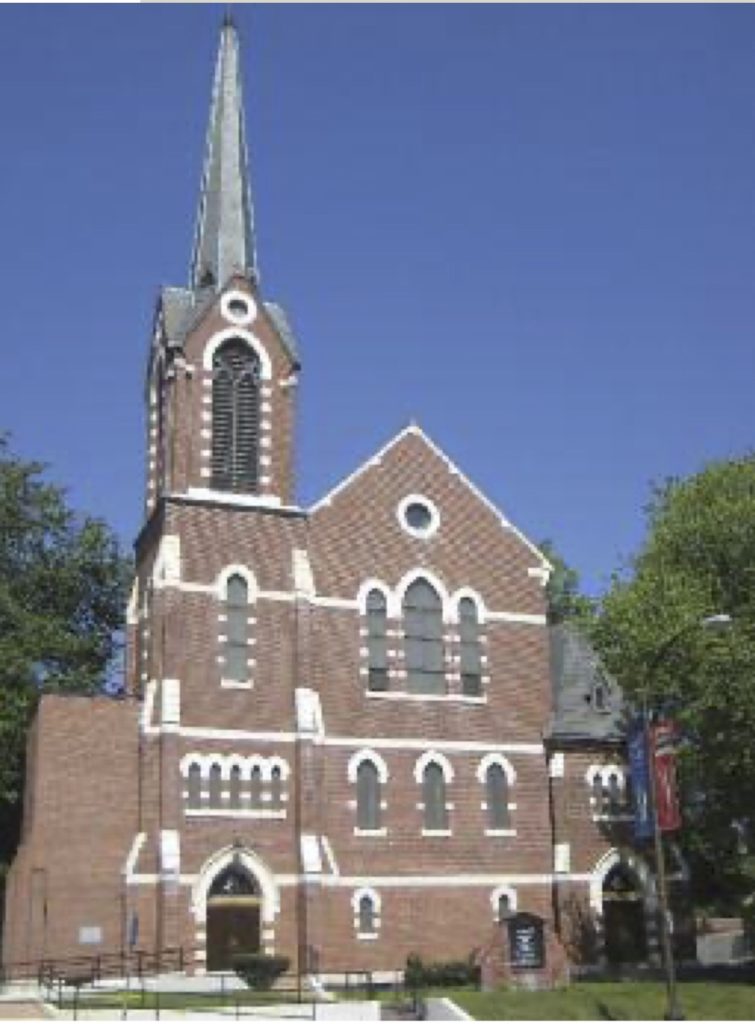
Metropolitan A.M.E. Zion Church, 2051 Main Street, Hartford. Built by E.H. Waters in 1873-74 for a white Methodist congregation, this building also served as a synagogue before becoming Metropolitan’s house of worship. photo: Whitney Bayers, CCT
Metropolitan A.M.E. Zion Church is directly descended from the first African American church in Hartford. When the African Religious Society separated into two churches in the early 1830s, one became the Talcott Street (now Faith) Congregational and the other the Colored Methodist Episcopal (now Metropolitan). The first pastor of the Methodist church was Hosea Easton, an early African-American protest writer, who raised funds to replace the church building when it burned in 1836. The new structure, on Elm Street, also provided a school for African American children. By 1856 the church was located on Pearl Street and associated with the African Methodist Episcopal Zion movement of New York. In 1924, the church building was sold to the City of Hartford. The congregation relocated to Main Street in 1926 and was later incorporated as the Metropolitan African Methodist Episcopal Zion Church.
Over the years, A.M.E. and A.M.E.Z. churches have been bastions of community activism. With community centers at home and missions in countries around the world, these denominations continue to strive for equality and share their message of acceptance and faith.
Much of the original research for this article was conducted by Dr. Katherine Harris for the Connecticut Commission on Culture & Tourism (CCT).
Mary M. Donohue was the senior architectural historian for the CCT. Whitney Bayers is the historic preservation fellow for the CCT.
Explore!
Read more stories about the African American experience in Connecticut on our TOPICS page.
Explore the sites and stories of Connecticut’s African-American churches on the Connecticut Freedom Trail website: www.ctfreedomtrail.org.
“A Family of Reformers: The Middletown Bemans,” Winter 2008/2009
Faith Congregational Church: 185 Years—Same People, Same Purpose,” Summer 2005

